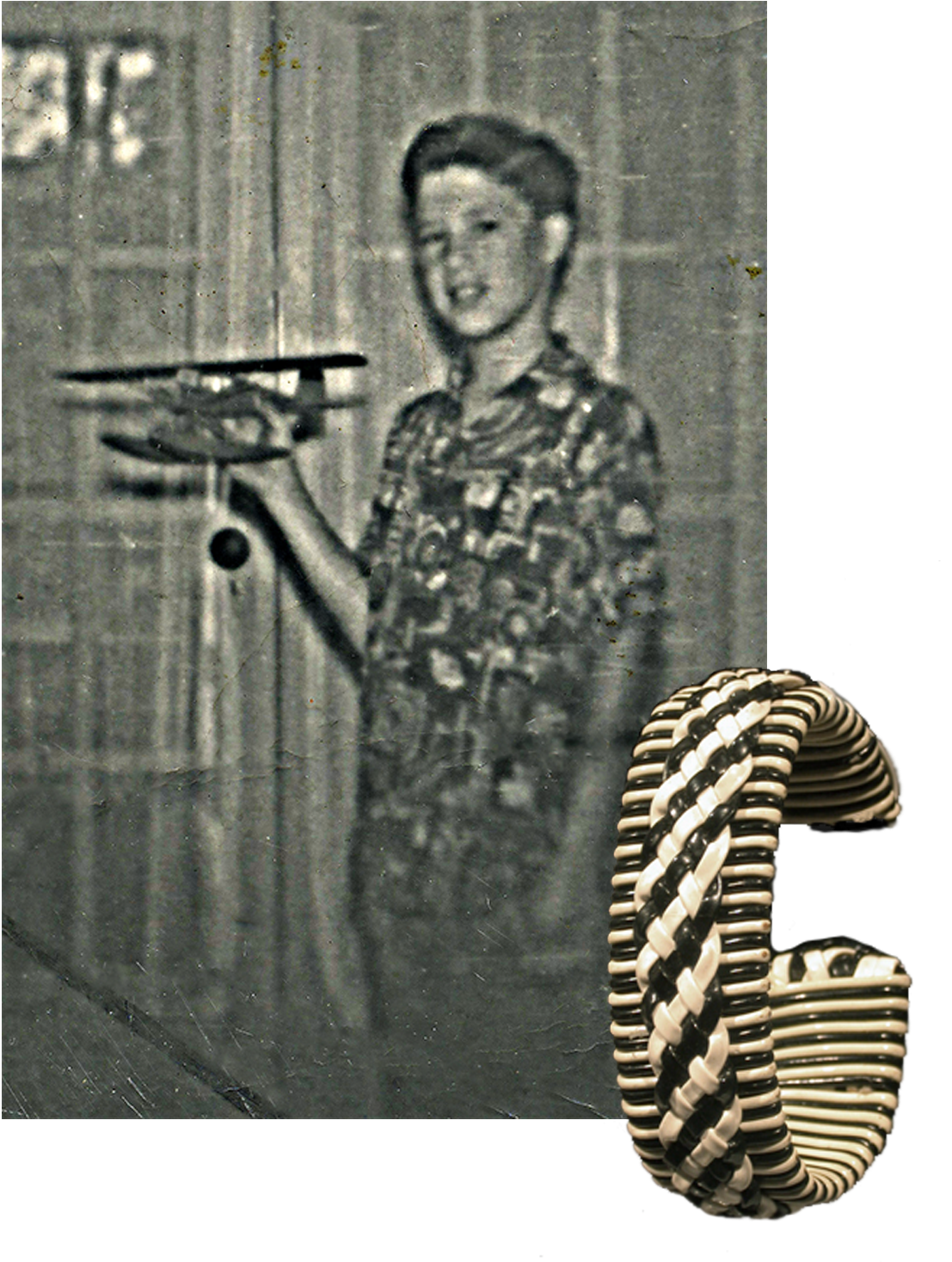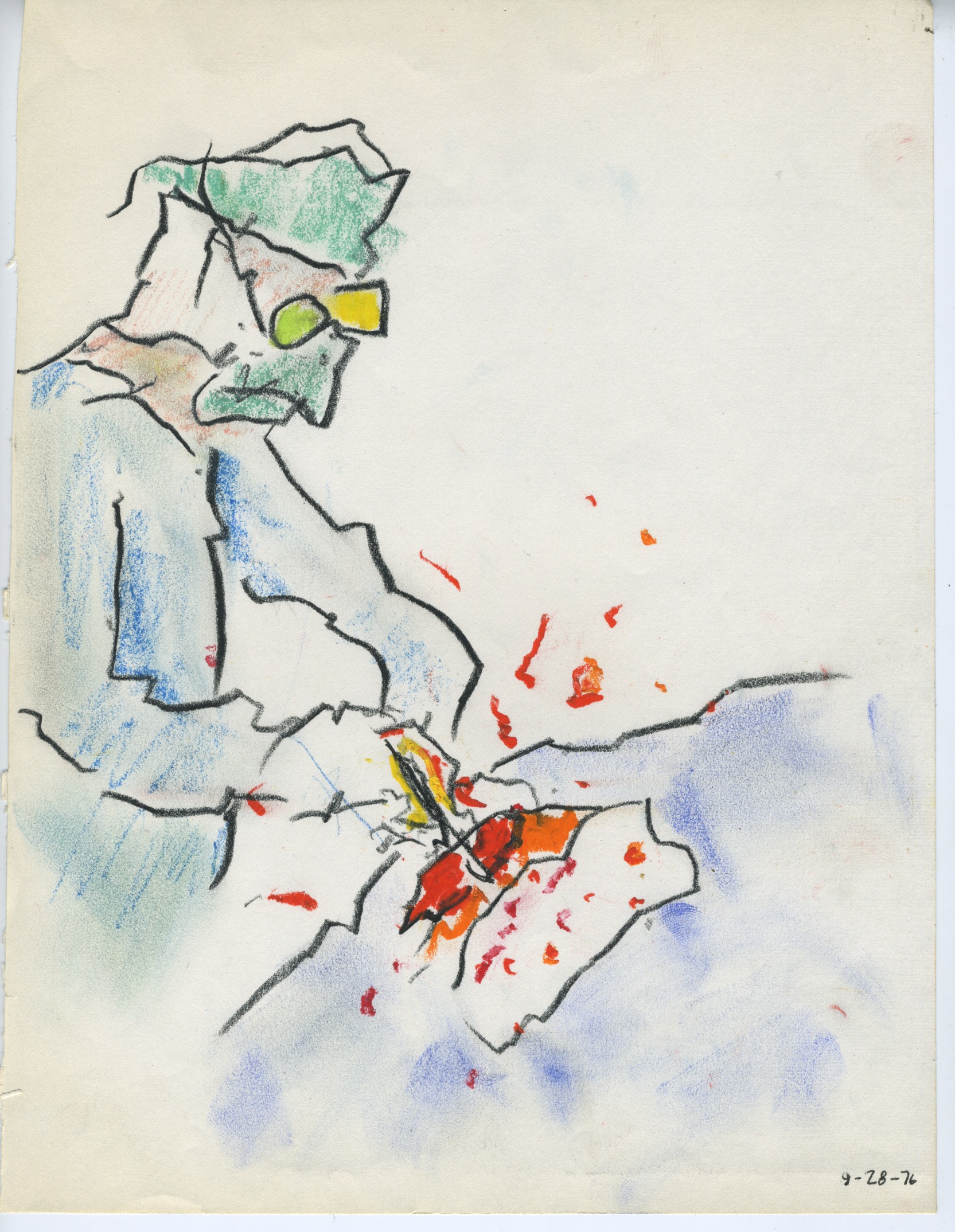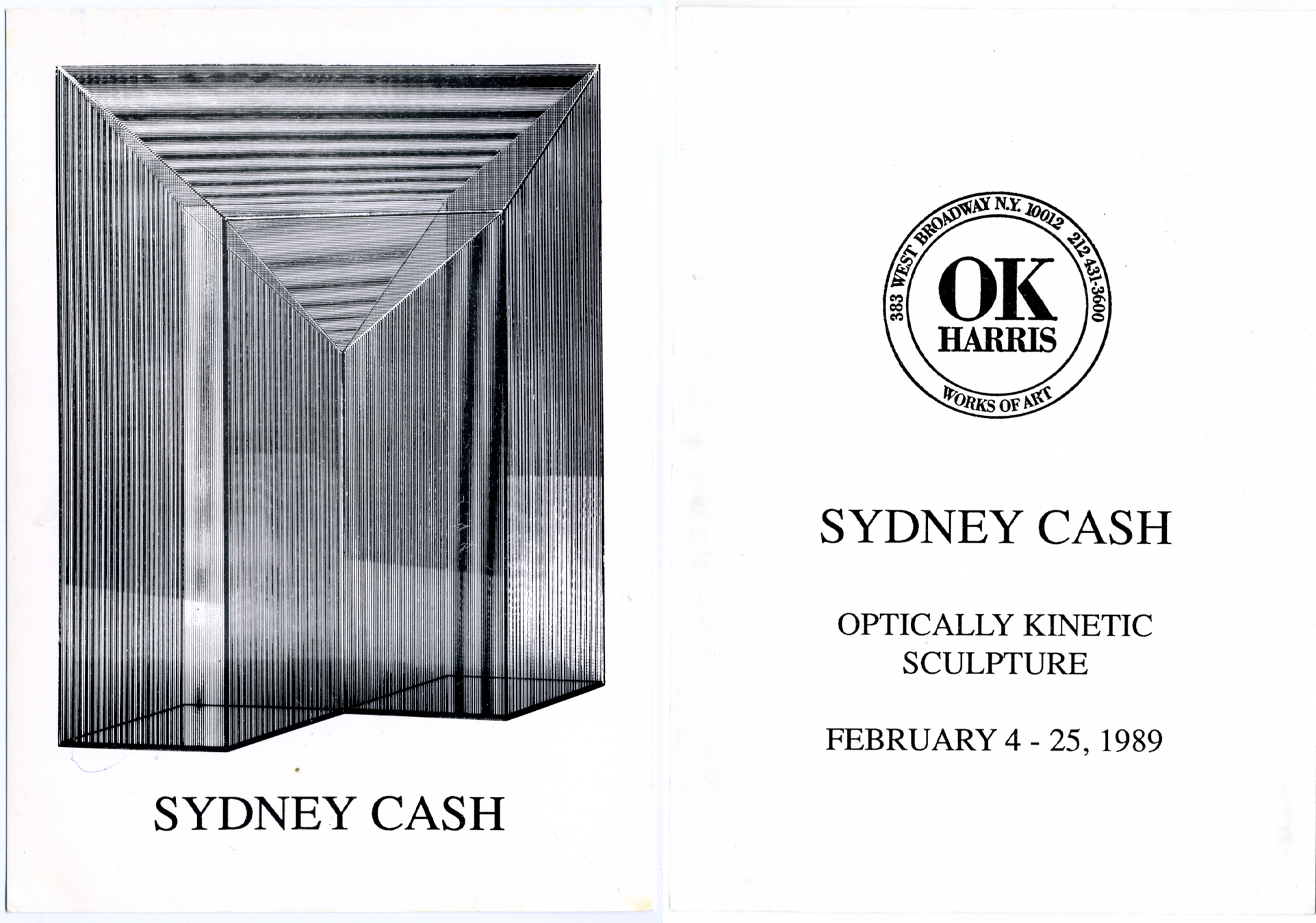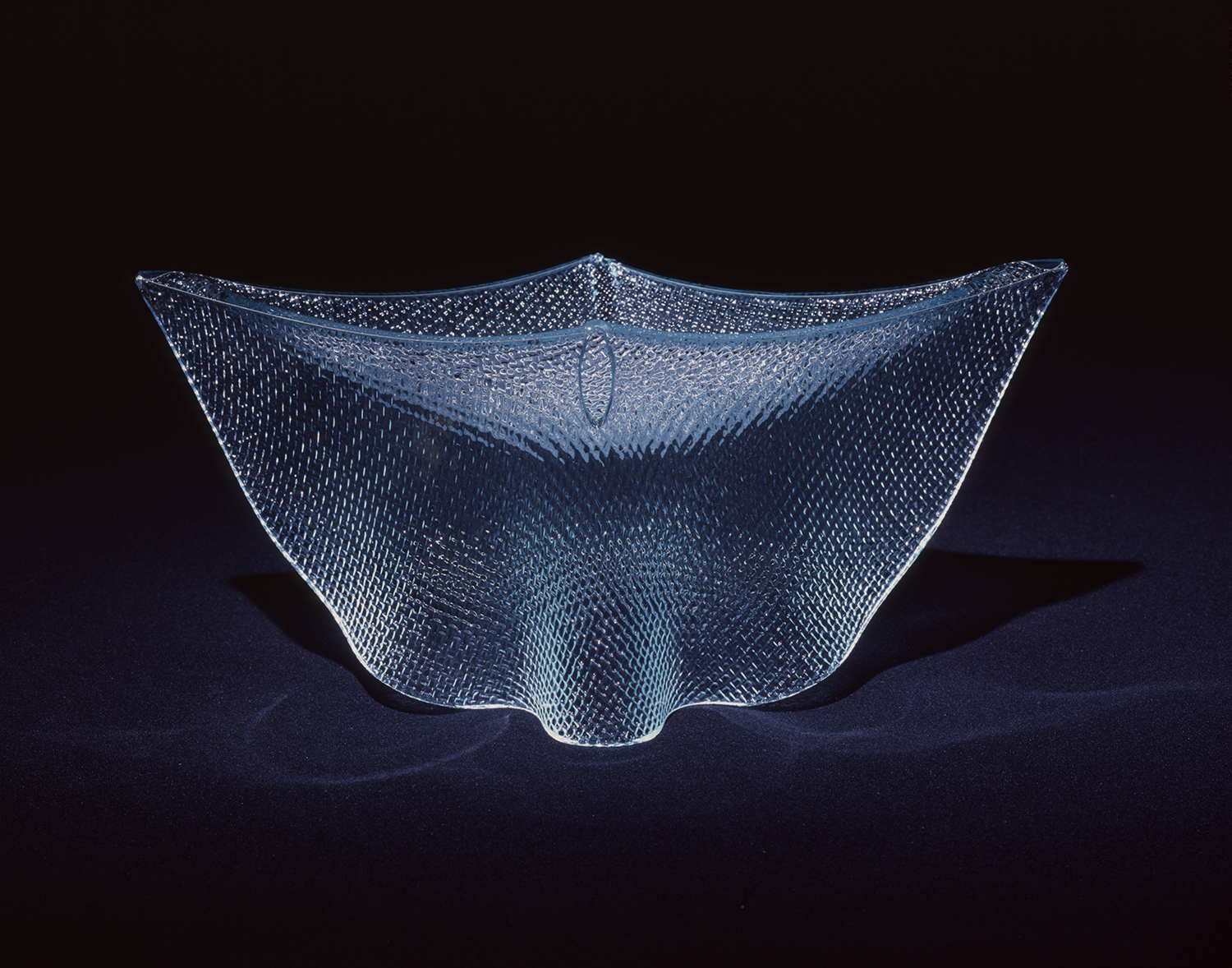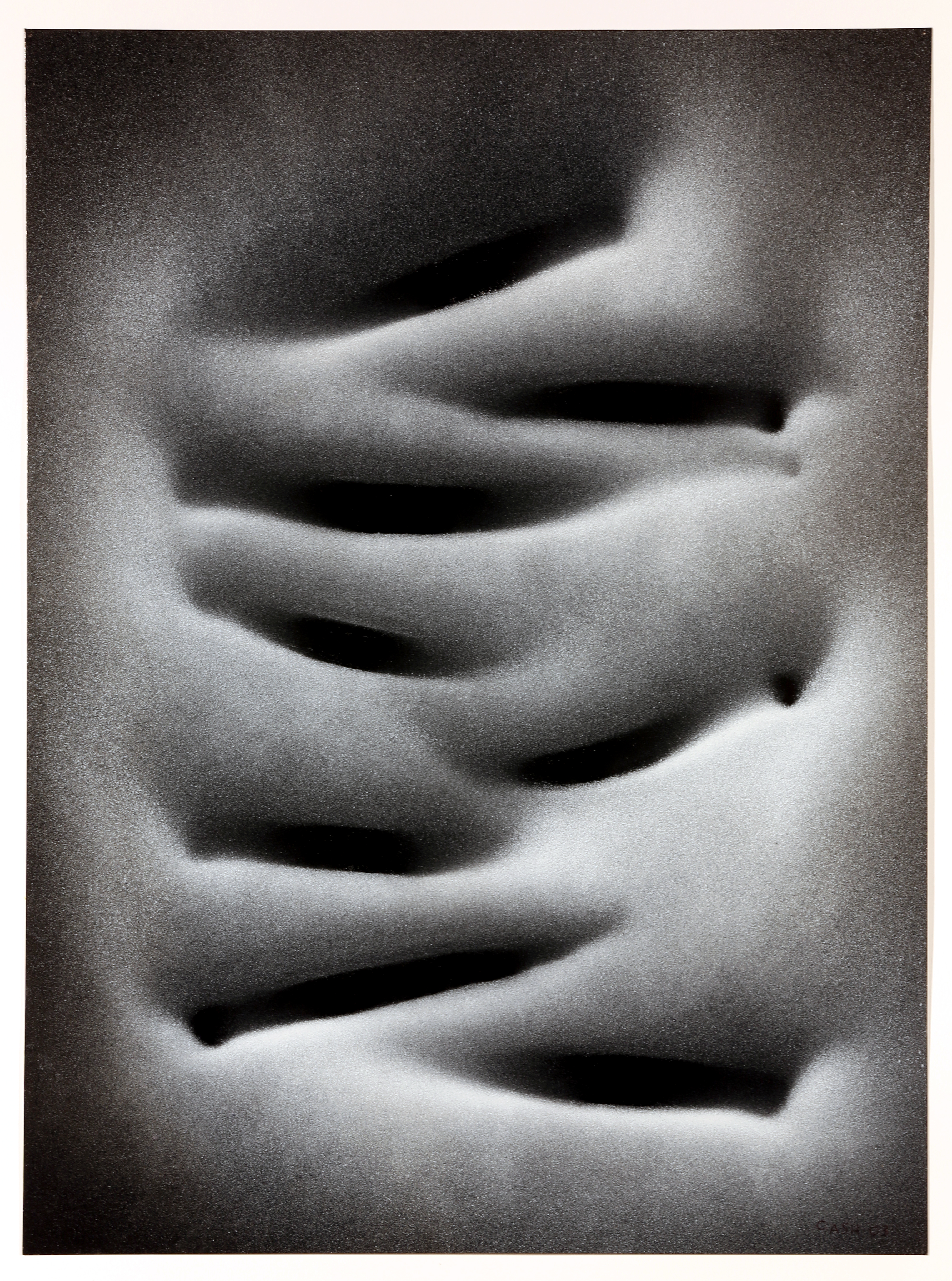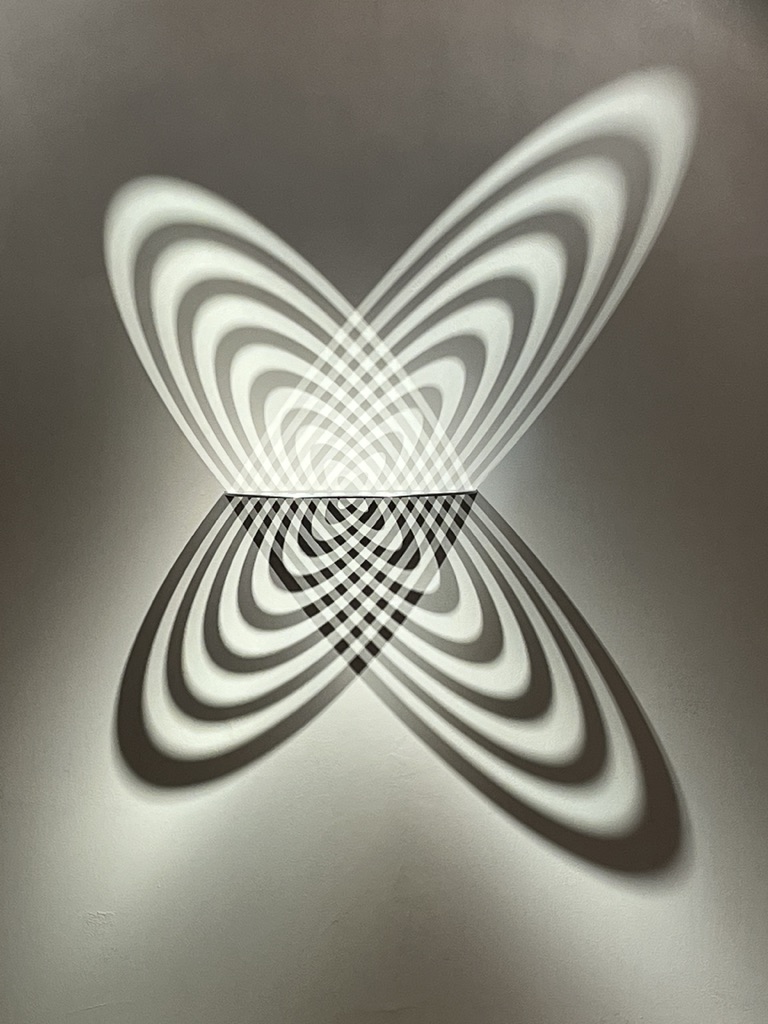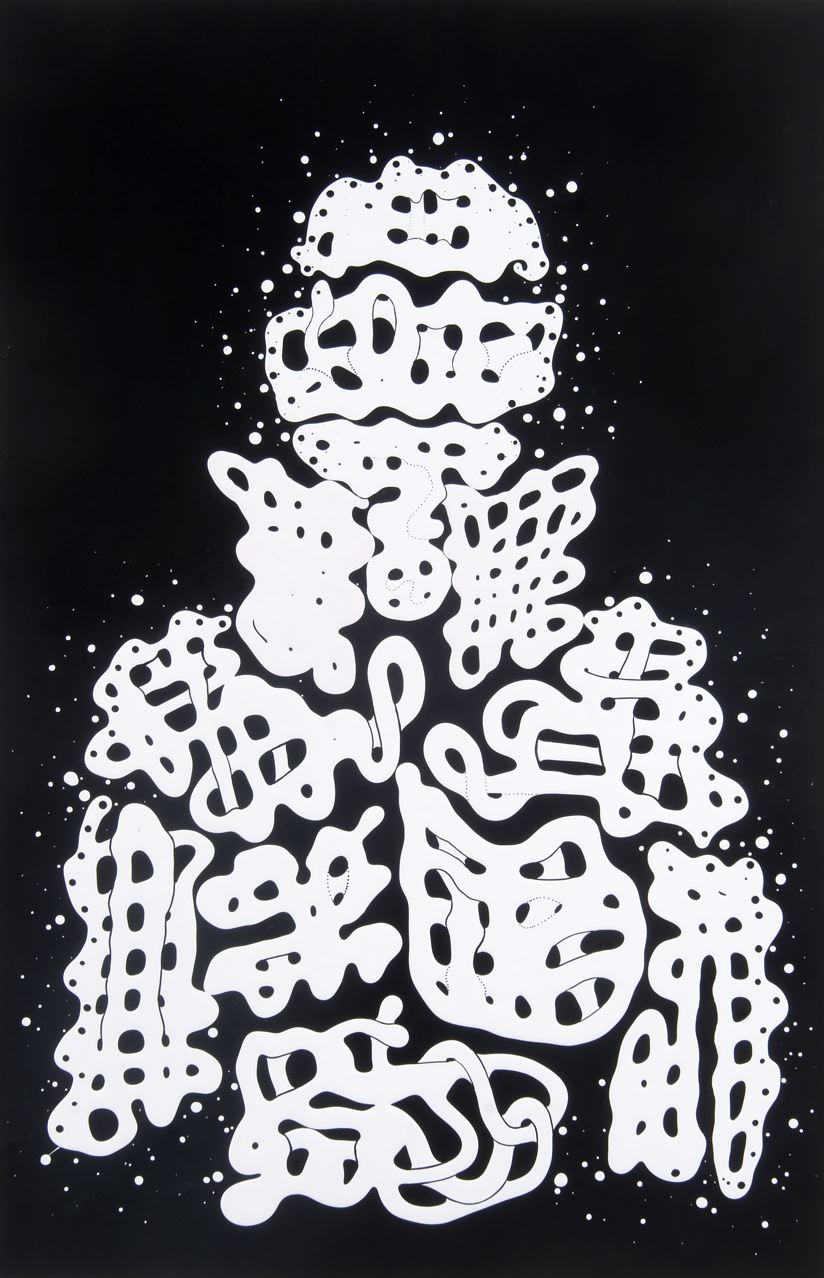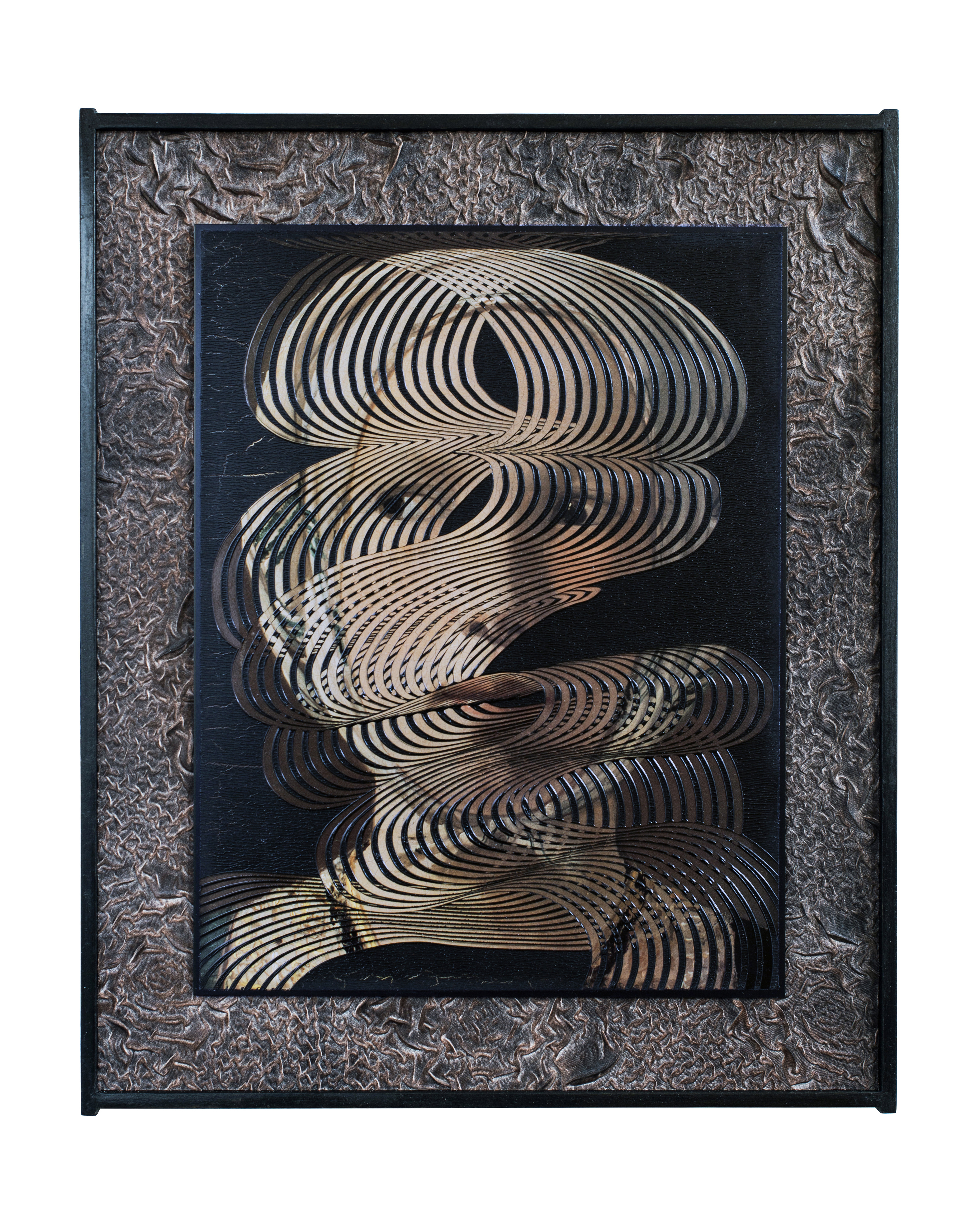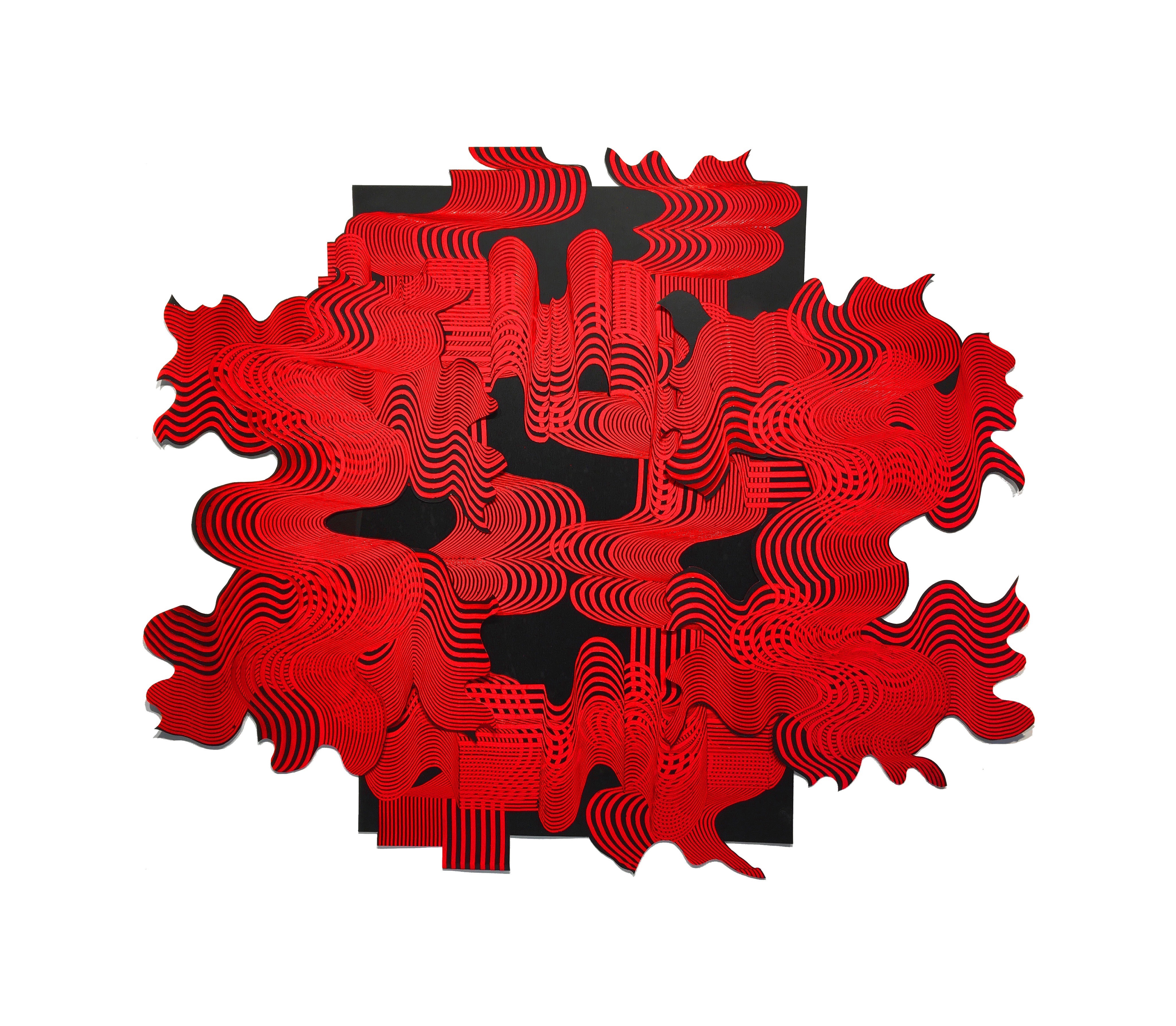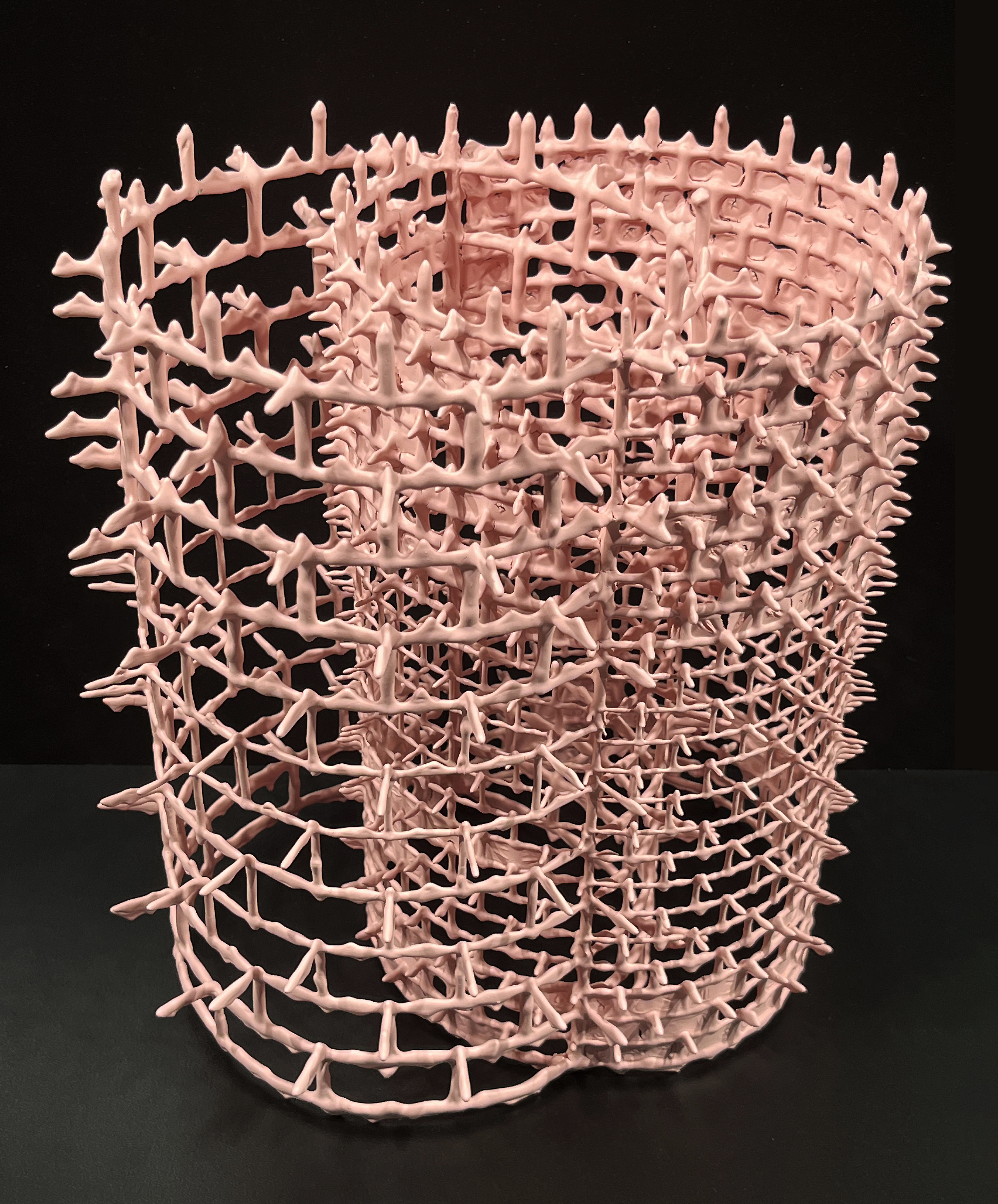Chronological Timeline
1941
Cash born in Detroit, Michigan. As a young boy, he discovers a passion for making.
In the summer of 1959, at age 17, Cash developed a project of sending up homemade high altitude balloons.
Sydney Cash in 1952 with a model airplane with pontoons made of balsa wood and tissue paper.
Lanyard bracelet made at summer camp 1953.
1968

After establishing a business casting replicas of old gargoyles, Cash moves to New York City and opens Gargoyles on 6th avenue in the West Village.
1969

Cash rents part of the White Street Glass and
Mirror factory space to be able to bend sheet glass and produce
“image-distorting mirrors”. Within the
year, the overcooked “mistakes” became more interesting than the mirror forms. Supplied with plenty of wonderful old art-deco glass, Cash’s experiment in a makeshift kiln setup become more and more ambitous.
1970

Cash closes the Gargoyles shop, sells the business and becomes a bonafied sculptor. As many businesses vacate their Tribeca spaces, Cash collects castoffs for experimentation or selling at the Canal Street flea market.
He attends the inaugural earth day celebration wearing a mirrored sandwich board, which gets mentioned in the Daily News.
He attends the inaugural earth day celebration wearing a mirrored sandwich board, which gets mentioned in the Daily News.
1971
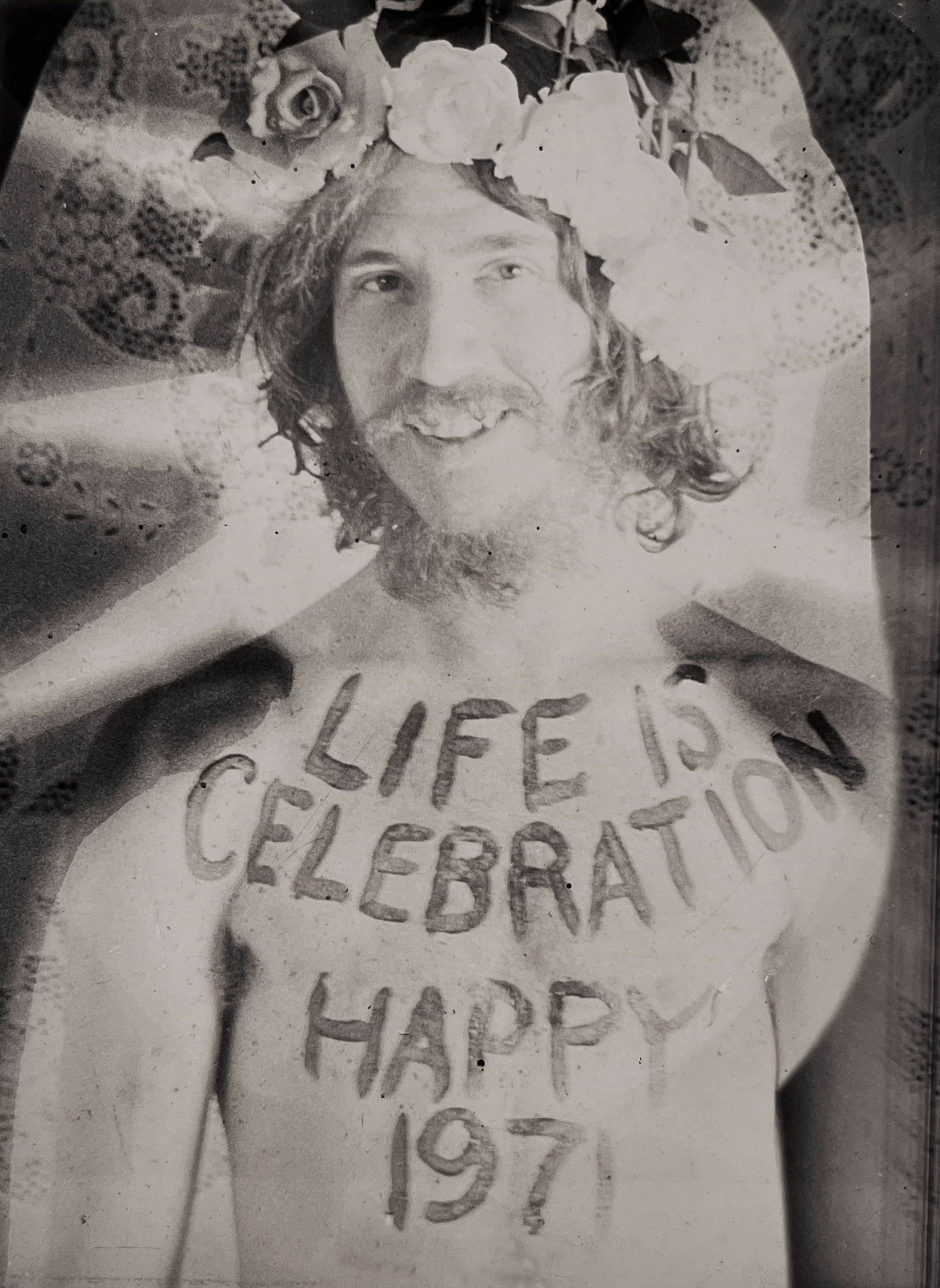
This image was styled and taken by my friend, the photographer Eugenia Lewis. In her darkroom, I printed the image onto small glass photographic plates, and I sent them out as New Year's gifts.
1976
Cash spends 2 years as the Artist in Residence first at the VA Hospital on 23rd St, and later at the Prospect Hospital, a small private hospital in the South Bronx, where Cash had full access to everything, including the operating room floor.
Blood Splattering, 1976, 11 x 14”
Blood Splattering, 1976, 11 x 14”
1981
Cash’s work is featured in American Craft Magazine at a moment where glass is becoming recognized by the art industry. The 4-page spread puts his work on the map, with galleries and collectors expressing interest in his slumped glass forms.
The same year, the Museum of Modern art adds Sydney’s slumped glass vase to its collection.
The same year, the Museum of Modern art adds Sydney’s slumped glass vase to its collection.
1983

Cash leaves the city and relocates to the Hudson Valley to make work from a spacious studio and raise a family amongst the apple orchards.
For the Nature Spirits, 1982, 22”x15”x12”
For the Nature Spirits, 1982, 22”x15”x12”
1987
Cash began working with flutex glass with optical prints images placed 4 inches (the focal length) behind the fluted lenses contained in welded structures. As the viewer moved, the lens scanned the pattern drawings and the 1-inch lens magnified 1/8th of an inch of the drawing inside.
In 1987, NYU’s Broadway Windows on 10th street and Broadway featured six of Cash’s large-scale flutex sculptures. The work was illuminated 24 hours a day. People would pull over in the middle of the night to try to understand what they were seeing. It garnered many superlative reviews.
Petit Tsunami #7, 1987, 10 x 12 x 4"
In 1987, NYU’s Broadway Windows on 10th street and Broadway featured six of Cash’s large-scale flutex sculptures. The work was illuminated 24 hours a day. People would pull over in the middle of the night to try to understand what they were seeing. It garnered many superlative reviews.
Petit Tsunami #7, 1987, 10 x 12 x 4"
1989
Cash began began silk-screening fine line imagery onto sheets of glass. He would then cut the glass and assemble the pieces into crystalline objects. The interaction of the fine line imagery created moire patterns that moved in relation to the viewer’s movements.
OK Harris exhibition announcement card, 1989
OK Harris exhibition announcement card, 1989
1996
Cash receives the Fellisimo Design Award for his Diamond Bowl made from slumped industrial glass.
Diamond Bowl, 1993, 8” x 15” x 7”
Diamond Bowl, 1993, 8” x 15” x 7”
2000

The NYC MTA commissions Cash to create glass sixteen 10-foot tall optical glass windows at the Queensboro Plaza subway station.
2004
During a transcendental experience at a meditation retreat, Cash is commanded to stop being an artist. So, he stops making artwork and dedicates his efforts to earning money with his glass jewelry.
2005
Cash develops techniques of spraying with white paint at acute angles over objects placed on black paper. The paint airflow over and around the objects helped to define dimensionality. The result is his series of Spray Paintings.
2007
To create Cash’s light sculptures, flat
glass panels mounted perpendicular to the wall have been imbedded with mirror
patterns that transforms focused light into shadow patterns below the panel,
and matching reflective light patterns above the panel.
A simple concept that leads to surprising results.
Atomic, 2008
A simple concept that leads to surprising results.
Atomic, 2008
2009
The series of poured painting depicting torsos or
"narcissistic shell paintings" were inspired by
work that I've been studying in the Ridhwan School, work based upon the teachings
of A.L. Almaas.
Narcissistic Shell #6, 2009, 35” x 23”
Featured on the cover of Chronogram magazine
Narcissistic Shell #6, 2009, 35” x 23”
Featured on the cover of Chronogram magazine
2012
I began making patterned paintings over historical portraits. It was an opportunity to be in relationship with the work of The Masters, and contemporize the portraits they had created. My version was created by rolling a layer of black oil paint evenly over the surface of the image, then using homemade tools, I revealed line patterns of the underlying portrait.
Good Fortune, 2013
Good Fortune, 2013
2017
At this point, Cash started mounting the paper patterned paintings onto DiBond, a flat structural material. He was then able to cut the DiBond exactly to the edge of the irregular paper painting, turning the painting into a thing, a sculptural object.
Knowing She Hath Wings, 2017
Knowing She Hath Wings, 2017
2019
In early 2019, while in recovery from an operation on his right-hand thumb, Cash began exploring Kleenex tissues as an art medium, making Color Studies to understand the particular qualities of this paper with inks and dyes.
Color Study #285, 2019
Color Study #285, 2019
2020
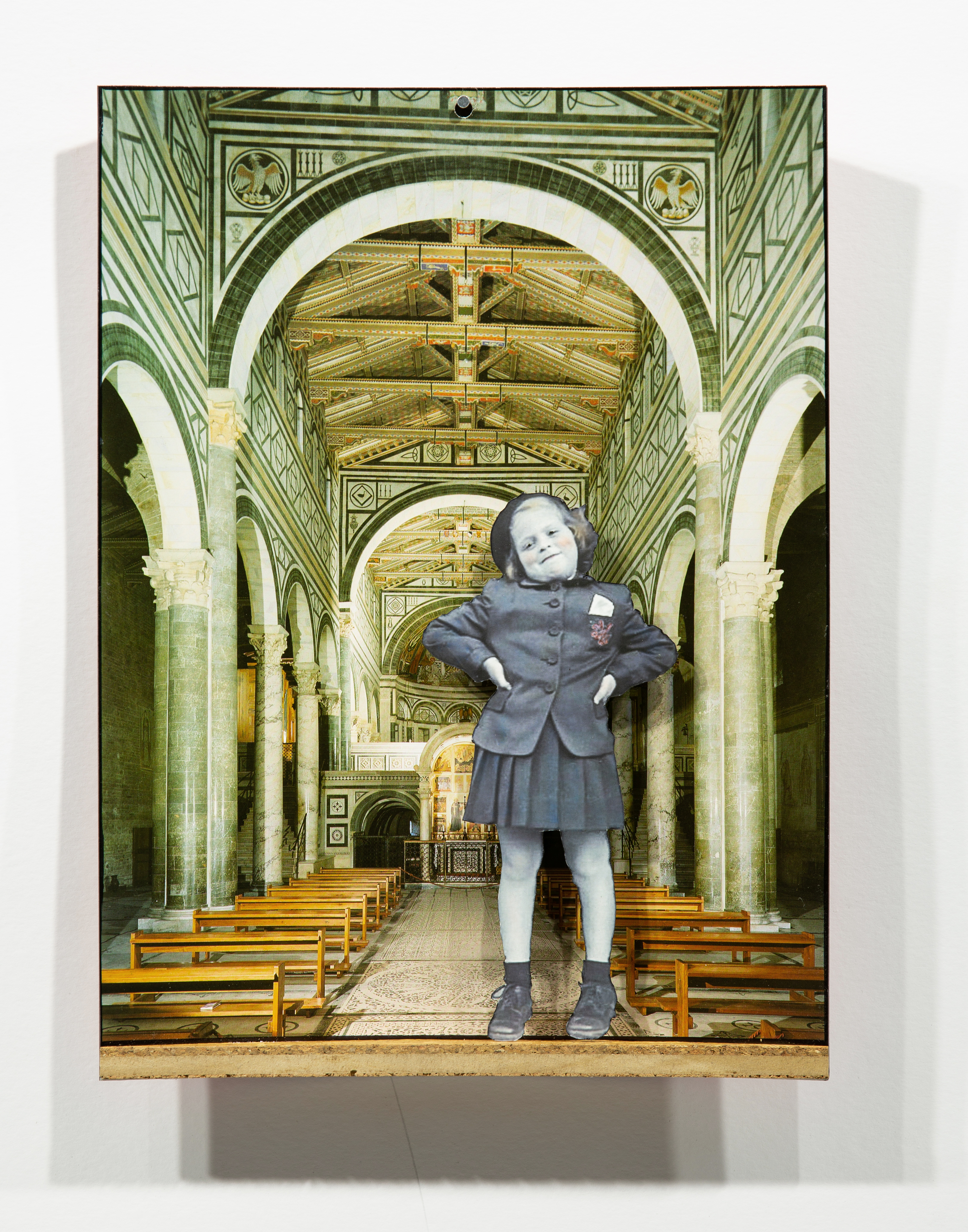
At the height of the Covid-19 lockdown, CASH BY MAIL was a year-long interactive art project that offered a group of 8 people the opportunity to creatively engage with Cash and have four unique paper artworks were delivered by mail on a quarterly basis.
2022
Cash started working with metal screening and hardware cloth that created transparent planes, and soon after began dipping them into vats of latex paint. The paint forms a flesh on the wire bones through multiple dippings.
Pink Creative Dynamism, 2022
Pink Creative Dynamism, 2022
